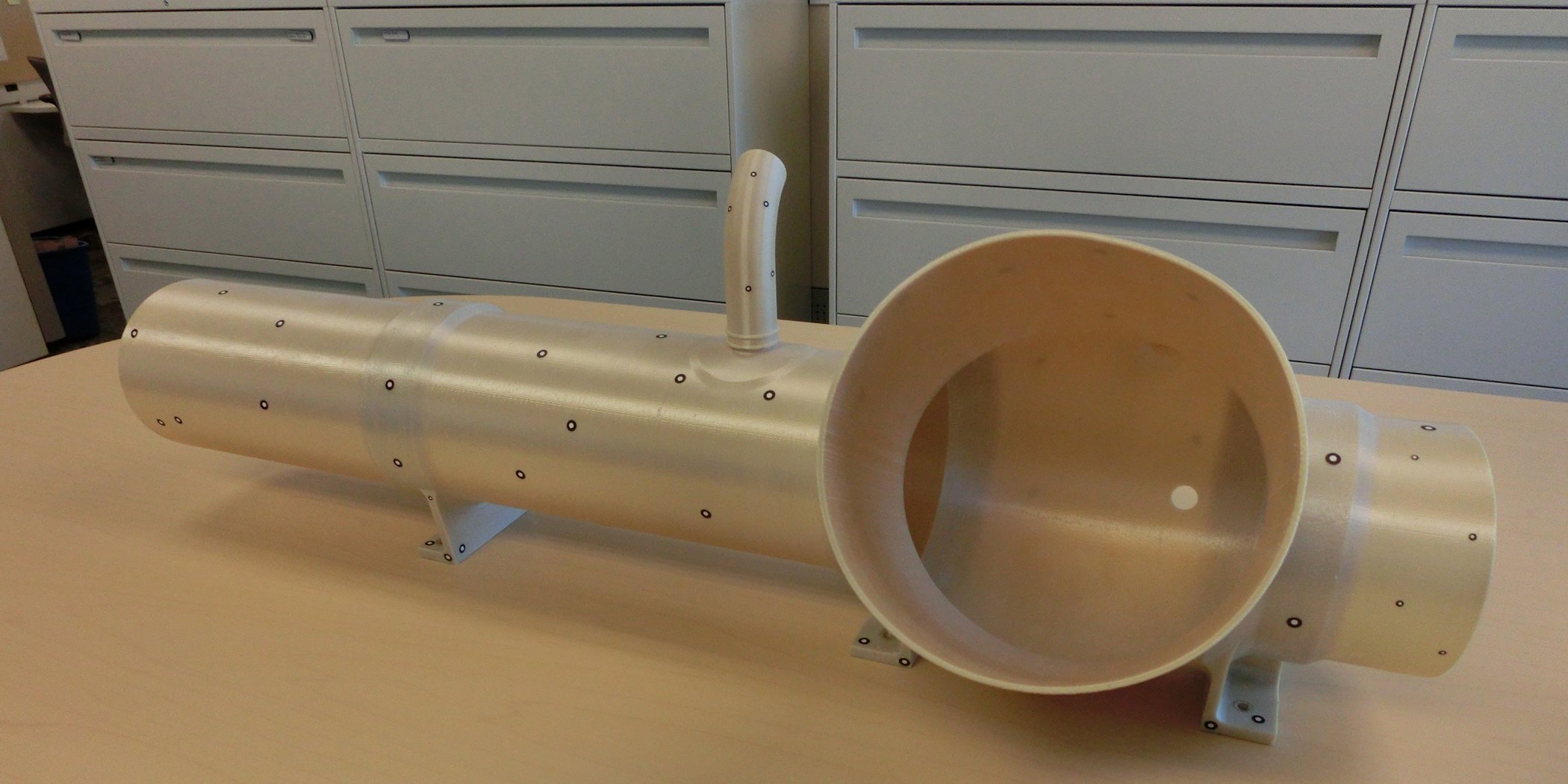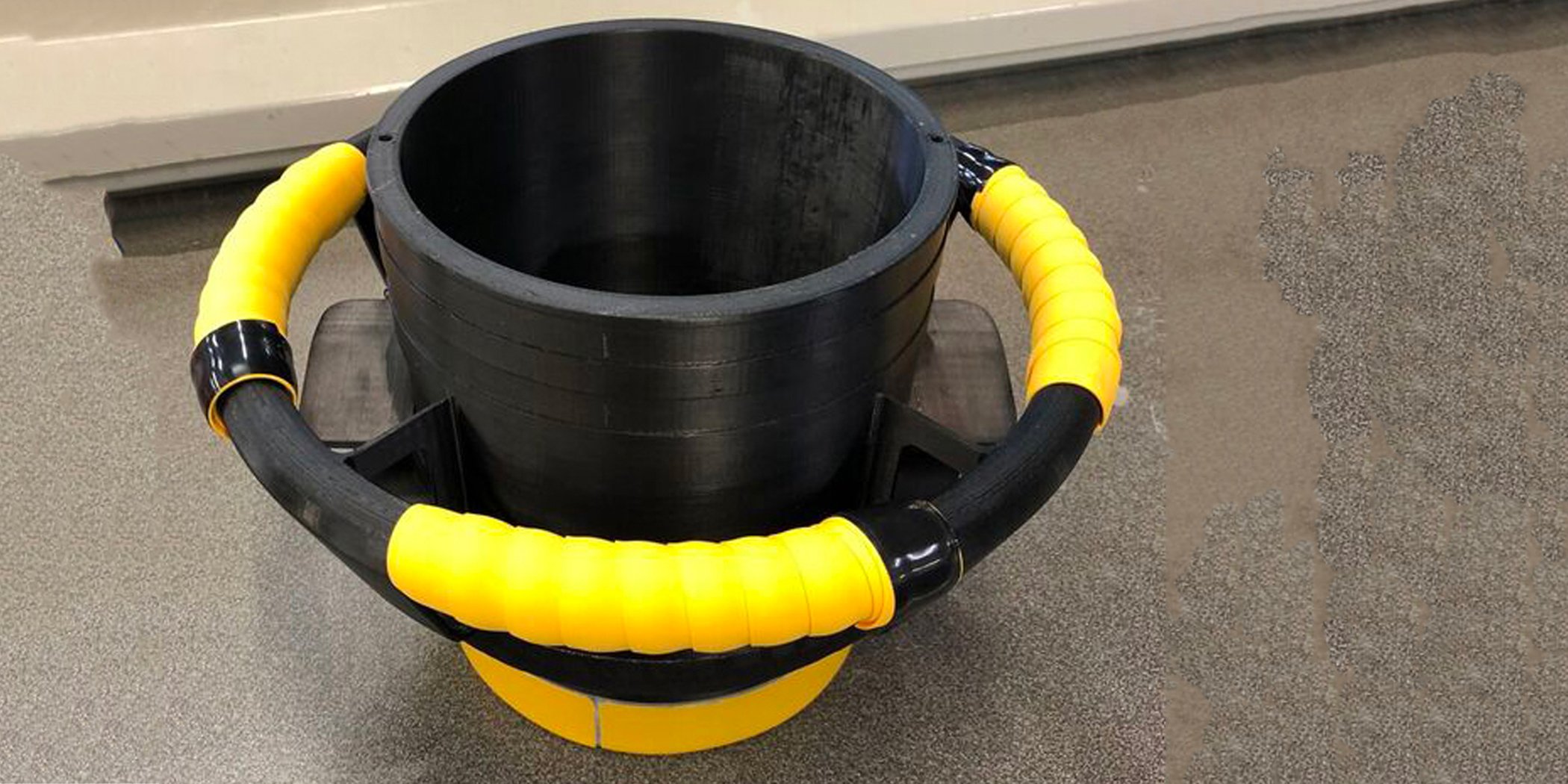Click Here to View This Page on Production Frontend
Click Here to Export Node Content
Click Here to View Printer-Friendly Version (Raw Backend)
Note: front-end display has links to styled print versions.
Content Node ID: 399151
Additive manufacturing (AM) has significant potential for aerospace, according to industry figures, though challenges remain in certification, the supply of materials, and other areas.
AM—also known as 3D printing—allows manufacturers to produce complex geometries using lightweight materials. These shapes often cannot be made using conventional methods, while the parts can be "printed" from a computer file, even on remote sites.
The technology was the subject of a recent paper by Scott Sevcik, vice president of the Aerospace Business Segment at Stratasys. The AM solutions provider has worked with Diehl Aviation, Marshall Aerospace, and other companies. While the most common form of AM technology—Fused Deposition Modelling (FDM)—has been used in aerospace for almost 30 years for prototyping purposes, the portfolio of materials and uses is rapidly expanding, the paper notes, meeting the stringent requirements needed to make aircraft parts flightworthy and achieving the levels of repeatability demanded to produce parts with consistent performance.


Additive Manufacturing Benefits
AM provides a range of advantages for manufacturing in general, though there are particular benefits for the aerospace sector, Sevcik told AIN. Aerospace manufacturers are extremely focused on reducing weight, “doing very complex things to shave a few pounds from an aircraft. They pursue every advantage they can find from a technology standpoint.” AM could be a good fit in this regard, Sevcik said, allowing for the use of lighter materials.
Volume also plays a key role. If a manufacturer is producing massive numbers of components, then tooling costs can be spread across them and do not have a big impact. However, aerospace manufacturing often deals in relatively low numbers of parts to fulfill an order, sometimes down to hundreds or thousands of a particular component. AM is highly effective at lower volumes, Sevcik explained, because it allows for production without tooling.
The aerospace aftermarket is also a potential driver of AM growth, Sevcik added. Few industries need to sustain a platform for 20 to 30 years or more, a routine requirement in aerospace. AM provides significant advantages in supplying spare parts at low volumes, Sevcik said. For example, Stratasys works with a business jet manufacturer that has more than $1 billion of parts around the world; the use of 3D printing on site means they can provide spare parts when needed, without facing the potential delays of going through customs procedures. The ability to easily print a part means they do not have to “guess” how many parts they’re going to need over the next 20 years, he said.
AM printing already provides increased agility in manufacturing, particularly around producing spare and out-of-production parts and reducing risks in the supply chain, said Jérôme Rascol, head of AM at Airbus. The European company has pursued various 3D printing projects; for example, it worked with Belgium’s Materialise to produce the first 3D-printed parts for the cabins of its A320 aircraft, in operation with Finnair since 2018.
Rascol pointed to a number of other advantages, such as reduced material costs, weight reduction, and increased performance, “thanks to the ability in some cases to support new architectures, as well as manufacturing optimized geometries.”
Dr. Melissa Orme, vice president of Boeing AM, echoed this. She also pointed to the consolidation of many parts into one, which reduces potential failure points, increases durability, and cuts assembly labor.
“AM is also allowing Boeing to accelerate innovation across the company to improve the quality and costs in our products and enhance efficiency and safety in our operations,” Orme said. “In collaboration with factory employees, AM is being used to develop ergonomic tools that increase employee safety and workplace efficiency.”
Orme said it would be included in Boeing’s “Lifecycle Wall” exhibit, part of the “Boeing Advanced Manufacturing” display.
Impediments to Growth
There is still massive room for expansion, Sevcik said: while an aircraft might have 800,000 components, the number of AM-produced parts is still only in the hundreds. There are numerous obstacles to the growth of the technology in AM. In his paper, Sevcik underlined the challenges of certification and material performance, though he noted “huge progress has been made in recent years in material development and specific solutions for aerospace,” with a number of aerospace-grade materials now available that comply with the traceability standards outlined by regulatory agencies.
Rascol said the technical and industrial maturity of the technology remains relatively low, though he added that this is always the case with new technologies. He said his company is “involving our primary authority EASA on the introduction of AM technology and implementation on Airbus products,” as well as working on multiple industry standardization and regulatory groups to discuss a framework on qualification and certification activities, with safety the major focus.
“We need to optimize the costs of all steps in the value chain,” he said. “This will come naturally with time, volume, and competition.”
Orme said that suitable, commercially available technologies remain limited. Additionally, as the technology changes and evolves, industry needs to find agile ways to adapt and create new AM databases, or augment existing ones.
“The supply chain is small and the machines require significant investment, making it difficult for small businesses to enter this space,” she added. “However, these challenges can be overcome with diligent effort, collaborations, and partnerships.”